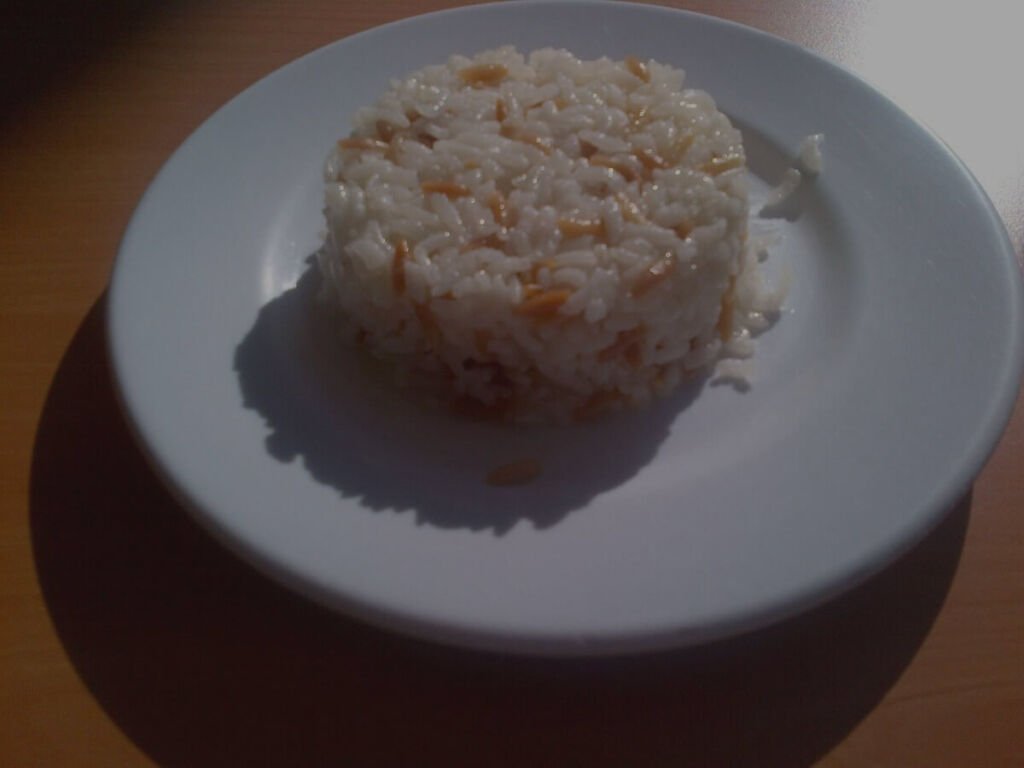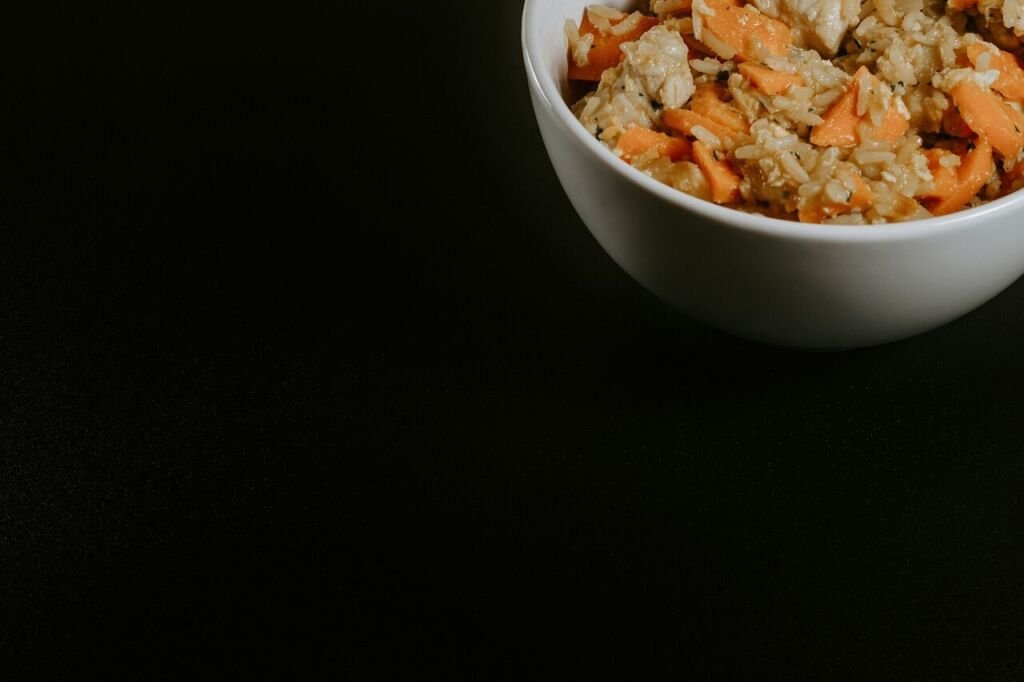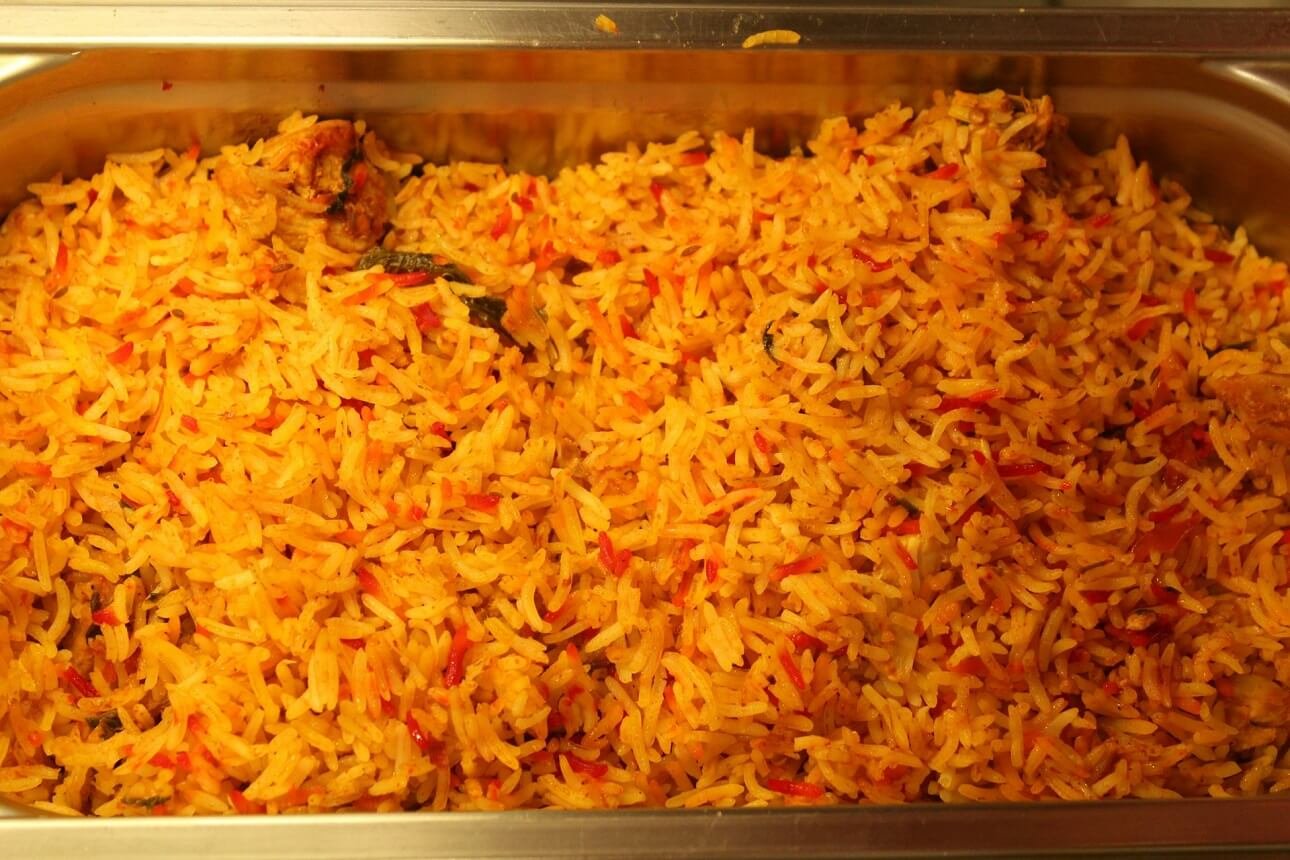Authentic Turkish Rice Recipe: Easy Steps for Delicious Results
Table of Contents
ToggleThe art of cooking Turkish rice is filled with history and skill. It combines Asia’s ancient grains with the Ottoman Empire’s cooking wisdom. Turkish rice has become a favorite among traditional Turkish side dishes.
It uses short-grain white rice, especially the prized Turkish baldo. This rice is the star in Turkish kitchens.
Every grain in a şehriyeli pilav has a story. It’s made with the right rice and liquid mix. Olive oil and butter add fluffiness.
Shehriye, small pasta pieces, are key. They give the dish its unique texture and flavor.
Turkish rice is more than a side dish. It’s a symbol of Turkey’s rich food history. It’s loved in fancy restaurants and simple homes alike. This humble rice pilaf is at the core of Turkish cuisine.
Unlocking the Secrets of Turkish Rice
Exploring Turkish rice’s history takes us on a journey through time. It shows how ancient traditions blend with modern cooking. This simple grain is more than just food; it’s a symbol of history and culture.
Origins of Turkish Rice
Rice cultivation started in Asia, but it made its way to the Mediterranean.
Turkish rice is made from Mediterranean grains. It became popular because it grows well and keeps longer than other grains.
Rice became a key part of Ottoman palace cuisine. It was turned into fancy pilafs for sultans.
Why Turkish Rice is Unique
Turkish baldo rice is known for its special texture and taste. Its plump grains soak up flavors well. The secret to perfect Turkish rice is in the cooking technique.
Using fats like butter or olive oil makes the rice taste better. It also helps get the rice’s golden color. This method combines Persian spices and cooking with stocks and fats.
The magic of Turkish rice isn’t just the type of rice. It’s the careful cooking that turns it into a royal dish. This shows how rice is not just food but an art form in Turkish culture.
Selecting the Perfect Rice Variety
Choosing the right rice for pilaf is key, especially for authentic Turkish dishes. Experts say long grain rice is best. It cooks up fluffy and separate, perfect for pilaf.
Imported sella basmati rice is a favorite for its smell and taste. It’s great with the spices found in Turkish and Middle Eastern food. This rice is parboiled, keeping its shape and preventing clumping.
Choosing the right rice is crucial for a dish’s quality and taste. Here are some top picks:
- Imported Sella Basmati Rice – Known for its nutty taste and strong texture, it absorbs flavors well.
- Turkish Rice Selection – Baldo rice from Turkey is creamy and tender, perfect for soaking up flavors.
For the best pilaf, knowing the rice’s differences is important. The right rice affects the dish’s texture and how it mixes with other ingredients. So, when making Turkish rice pilaf, start with the best rice.
Mastering the Rice Preparation Techniques
Getting rice just right is key for great Turkish dishes. Techniques like rinsing, soaking, and adding fats make a big difference. These steps help bring out the best flavors and textures.
Rinsing and Soaking Rice: Myths and Methods
Rinsing rice is important, with many ways to do it. A simple method is to rinse it a few times until the water is clear. Then, rinse it under running water without stirring.
Soaking rice is also a topic of debate. It can make rice fluffier and separate. Soak it for at least 30 minutes to cook faster and evenly.
The Role of Fats in Achieving Fluffiness
In Turkish cooking, fats like butter or olive oil are essential for fluffiness.
Add them after cooking to keep grains separate and shiny. Timing is key to avoid greasiness or uneven flavor.
Mastering these techniques is crucial for Turkish dishes. From rinsing and soaking to adding fats, each step is important. Together, they create a dish that’s both delicious and satisfying.
| Technique | Description | Benefits |
|---|---|---|
| Rinsing Rice | Gently wash until water runs semi-clear and drain in sieve | Removes excess starch, prevents stickiness |
| Soaking Rice | Soak for 30-60 minutes prior to cooking | Reduces cooking time, enhances texture |
| Using Fats | Add premium fats post-cooking | Enhances flavor, achieves fluffiness, keeps grains separate |
How To Make Turkish Rice
In this section, we’ll explore how to make traditional Turkish rice. It’s known for its fluffy texture and aromatic flavor. Our guide helps even beginners make perfect Turkish rice.
Step-by-Step Cooking Guide
First, the right rice to liquid ratio is key. Use 1 cup of long-grain white rice, like basmati, with 2 cups of chicken stock. This mix ensures the rice is moist and flavorful.
Start by heating 1 tablespoon of olive oil in a deep skillet. Add 3 tablespoons of orzo pasta and cook until golden. This step adds a nutty flavor to the dish.
- Add 1 cup of rinsed and drained basmati rice to the skillet, stirring it into the orzo and oil mixture.
- Pour in the chicken stock, adding ½ teaspoon of salt to enhance the grains’ natural flavors as they cook.
- Bring the mixture to a boil before reducing the heat to a low simmer. This gentle cooking method helps in achieving fluffy rice by allowing it to slowly absorb the liquid.
- Cover the pan and let the rice cook for about 15 minutes or until the liquid is fully absorbed and the rice is tender.
Timing and Heat Control
Heat and timing are crucial for Turkish rice. After the rice absorbs all the stock, remove the skillet from the heat. Let it stand, still covered, for 5-10 minutes. This step ensures the rice is perfectly fluffy.
Top your rice with a tablespoon of salted butter for extra richness. Garnish with chopped parsley for a fresh, herbal note that complements the creamy rice.
By carefully managing the cooking process, you can make perfect Turkish rice. It’s a great base for many meals and also delicious on its own. This guide helps you achieve the best texture and taste in your Turkish rice.
The Significance of Baldo Rice in Turkish Cuisine
The Baldo rice importance is huge in Turkish rice dishes. It comes from Balkesir, Turkey, and is a medium grain rice. Its plump grains are perfect for Turkish pilav.
It needs a special rice-to-water ratio of 1:2 and cooks faster. This makes it a favorite among chefs and home cooks in Turkey.
Pilav is a big part of Turkish culture. It’s often the main dish at special events and family gatherings. Baldo rice is key in these dishes, mixing well with chickpeas, saffron, and mussels.
| Baldo Rice Feature | Importance in Turkish Cuisine |
|---|---|
| Shorter Cooking Time | Allows quick preparation for family and festive meals. |
| Grain Texture | Ensures the distinct plumpness, ideal for pilav. |
| Medium Grain Variety | Well-suited for absorbing flavors from spices and other ingredients. |
| Rice-to-Water Ratio (1:2) | Achieves the perfect consistency required for traditional pilav. |
| Popularity in Dishes | Utilized in various classic dishes such as iç pilavı and mixed vegetable pilav. |
For generations, Baldo rice has been the go-to for Turkish pilav. It’s a key part of both festive and everyday meals in Turkey. Its cultivation shows the deep respect and passion for the pilav tradition.
Incorporating the Distinctive Şehriye
The traditional Turkish şehriyeli pilav is a beloved rice dish. It combines the softness of rice with the crunchy pasta.
The şehriye pasta preparation is key, using orzo and vermicelli. They are browned to get the perfect golden color.
Frying the Pasta for Golden Perfection
Browning pasta is an art in Turkish cooking. The heat is controlled to avoid burning the pasta. This process gives it a rich, golden color and a nutty flavor.
Orzo and vermicelli add different textures and tastes to the pilaf.
Blending Pasta and Rice for the Ideal Texture
After browning, rice and pasta are mixed. The cooking is adjusted to keep the rice fluffy and the pasta slightly chewy. This mix of textures makes the pilaf special.
In Turkish cooking, spices, olive oil, and other ingredients like bulgur and legumes are used. They make meals nutritious and flavorful. The table below shows how these ingredients enrich Turkish dishes.
| Ingredient | Role in Turkish Cuisine | Typical Dishes |
|---|---|---|
| Bulgur | Versatile, used for its nutty flavor and texture | Pilafs, Salads, Stuffed Dishes |
| Spices (Cumin, Paprika, Sumac) | Adds distinct flavors | Meats, Vegetarian Dishes, Salads |
| Salça | Enhances flavor with a rich, concentrated taste | Kebabs, Stews, Pilafs |
| Turkish Yogurt | Used for its creamy texture and tanginess | Soups, Marinades, Desserts |
| Olive Oil | Primary cooking fat, used for its health benefits and flavor | Vegetable Dishes, Mezes, Seafood |
Adding şehriye to Turkish rice pilaf shows the culture’s love for detail. It highlights the importance of rich, layered flavors in their dishes.
Complementing the Turkish Rice with Authentic Pairings
Turkish rice is known for its creamy texture and rich flavor. It’s a key part of traditional Turkish dishes. It pairs well with various sauces, stews, and side dishes.
The rice’s versatility lets it soak up and boost the flavors of other dishes. This makes it a favorite in both home cooking and fancy restaurants in Turkey.
Matching with Sauces and Stews
Choosing the right sauces and stews is key when pairing with Turkish rice. The rice’s mild, buttery taste works well with the rich flavors of Turkish stews and sauces. A hearty stew like Kuzu Tandır is a great choice.
The slow-cooked lamb in Kuzu Tandr melts in your mouth and mixes with the rice. Adding a dollop of yogurt or a tangy tomato sauce can make the dish even more flavorful.
Accompaniments that Enhance Turkish Rice
Besides stews and sauces, Turkish rice is often served with side dishes. A creamy Greek yogurt is a perfect contrast to the warm rice. For a different texture, try a bulgur pilaf or a green lentil salad.
These sides not only add nutrition but also cater to different tastes. They show the variety and richness of Turkish cuisine.
| Dish | Type | Description | Best Paired With |
|---|---|---|---|
| Kuzu Tandır | Stew | Slow-cooked lamb | Turkish rice with yogurt sauce |
| Bulgur Pilaf | Side Dish | Cracked wheat cooked with vegetables | Grilled meats and Turkish rice |
| Green Lentil Salad | Side Dish | Lentils with herbs and a lemon vinaigrette | Spicy Turkish stews and rice |
The secret to serving Turkish rice is knowing how to enhance the main dish’s flavors. It works well with both hearty stews and light salads. Turkish rice is a beloved part of Turkish culinary traditions.
Conclusion
The journey to master Turkish rice is more than cooking. It’s a deep dive into Turkish cuisine’s rich history. Over centuries, dishes like meze, kebabs, pides, and baklava have become iconic. These dishes have shaped Turkish food culture.
Our exploration showed that the secret to perfect Turkish rice is in the choice of grains and cooking methods. Baldo rice and careful cooking, including rinsing and adding fats, are key. The addition of şehriye makes it even more special.
Rice is a big deal in Turkish meals. Pilaf varieties like Saffron and Pastry Pilaf show rice’s importance. After 20 minutes of prep, each serving is a flavorful and nutritious part of a meal.
We’ve shared tips to help you cook like a pro. Turkish rice is more than a side dish; it’s a key part of Turkish food tradition. It adds depth and history to every meal.
On any Turkish table, a well-made rice dish is a sign of Turkey’s culinary sophistication. It connects us to Turkey’s history and people. We hope these tips have sparked your interest in cooking Turkish rice.
What is the secret to making authentic Turkish rice?
To make authentic Turkish rice, start with the right rice, like Baldo or Sella Basmati. Use the right amount of liquid and cook it just right. Finish by letting it rest to make it fluffy.
How did rice cultivation integrate into Turkish cuisine?
Rice came to Turkey from Persia and became a staple. It was great for cooking and storing. It became a key part of Ottoman palace cuisine and Turkey’s food culture.
What makes Turkish rice unique compared to other rice dishes?
Turkish rice stands out because of its special grains and cooking methods. It uses Baldo rice and tiny pasta called şehriye. These techniques make the rice fluffy and separate.
Which rice varieties are best for making Turkish pilaf?
Baldo rice is the top choice for Turkish pilaf. But, Sella Basmati rice is also great. It adds flavor and aroma to the dish.
What are some dishes that complement Turkish rice well?
Turkish rice goes well with stews and sauces. It also pairs well with yogurt, salads, bulgur pilaf, and lentil salad. These pairings enhance the meal’s flavors and textures.






